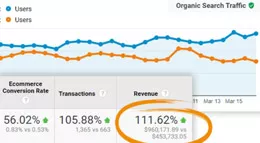Choosing A Domain Structure To Sell Abroad
In the age of global connectivity, expanding your business internationally is a strategic necessity – but it involves a unique set of challenges, like choosing an effective domain structure to sell abroad. This article delves into the nuances of selecting an optimal domain strategy, exploring the merits and drawbacks of using folders, subdomains and Country Code Top Level Domains (ccTLDs). We’ll help you make an informed decision that matches your business goals and maximizes your international presence.
Challenges of International Trade
Growing a business internationally can be expensive. It often requires a more secure checkout process, additional shipping options and offering support to customers who may speak a different language than your customer service team.
Shipping internationally is a fantastic way to grow your company, bringing your products to an entirely new audience. For eCommerce sites that offer unique or niche merchandise, they’ll often discover that these international customers will quickly become a substantial part of their revenue.
In fact, you may find it beneficial to open a warehouse or storefront internationally to exclusively target this growing audience. While international customers can discover your website on their own, HubSpot found that customers were more likely to purchase from websites that appeared to be tailored for their country.
3 Ways To Optimize International Content
There are three primary ways to create a portal to target these international customers:
Google Prefers ccTLD
According to their official webmaster’s blog, Google uses ccTLD as the first way to determine the country target of the website. So, if your company can afford it, you’re better off investing in multiple top-level domains. Google will use additional, visible elements on your website to determine the language and country you’re attempting to target, but the search engine will instantly recognize a ccTLD.
Furthermore, Google allows users to filter search results and display only websites built for their country. While this is an option that the user must select, it can prove popular in certain countries (such as the UK). If you open a physical storefront abroad, having a country-specific domain will make it far easier to get your website listed on directories listing companies specific to those locations.
Customers Are Sensitive To ccTLD
In his HubSpot survey, Eli Schwartz asked US customers to identify which website would be more likely to offer express shipping. More than 40% of respondents correctly identified Best Buy as the local website. Amazon’s brand equity likely led to some confusion for users, as many likely associated the Japanese website with its American counterpart, but unless you’re Amazon, chances are that this notoriety will not be as effective for your own brand.
While their results were inconclusive, with some users showing no preference for domain extension, a surprisingly substantial portion do. As users become more familiar with how the web works, it’s reasonable to assume that the percentage of customers sensitive to ccTLD will increase.
Choosing An Implementation
If you have the financial and technical resources, invest them in creating a ccTLD architecture. Not only is this Google’s suggested method, but it’s something that your customers will take note of, and they can make their purchasing decisions based, in part, on the domain you choose.
If you’re unsure how effective country-specific domains will be with your current customer base, you can test them using Adwords. When building search display ads for your targeted companies, you can modify the display URL to show a ccTLD. For example, while the ad we display might direct users to outerbox.com, we could make the text display outerbox.fr. By monitoring the click-through rate (CTR), we’d get an idea of how much the site domain matters to users.
Implementing language or country-specific domains should always be what your company is aiming for if you’re serious about growing internationally. Root folders or subdomains will allow you to tailor your content to reach these other countries, but they won’t be as effective from a branding perspective.
Thanks to the internet, your business can reach more customers than ever before, often with far less overhead. Building out localized versions of your content can be expensive and complicated, but it can also increase revenue by putting your brand in front of an entirely new market.
Whether you’re ready to make the jump and launch entirely new websites or opt to start with a subdomain, an international launch can prove to be one of the most financially rewarding investments your company can make.

